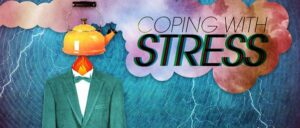Acute stress disorder DSM-5 is a mental health condition that can occur after someone has been through a traumatic event. This event can be anything from a natural disaster to being in a car accident. Symptoms of ASD usually begin within the first month after the traumatic event, but they can also appear later on. In this blog post, we will discuss what acute stress disorder DSM-5 is and how it is diagnosed.
Contents
What Is Acute Stress Disorder?
 Acute stress disorder is a mental health condition that can occur after a person is exposed to a traumatic event. It is characterized by symptoms such as flashbacks, nightmares, and avoidance of anything that reminds the individual of the event. While many symptoms of acute stress disorder seem to overlap with PTSD.
Acute stress disorder is a mental health condition that can occur after a person is exposed to a traumatic event. It is characterized by symptoms such as flashbacks, nightmares, and avoidance of anything that reminds the individual of the event. While many symptoms of acute stress disorder seem to overlap with PTSD.
Acute stress disorder was first recognized as a distinct diagnosis in the DSM-IV, and it has been retained in the most recent edition of the manual, the DSM-V. This condition is simply described as “the development of characteristic symptoms following exposure to an extreme traumatic stressor.” In other words, a person must have experienced or witnessed a traumatic event and then developed symptoms within a month of that event.
Many people who experience a traumatic event do not go on to develop acute stress disorder. It is estimated that the condition affects between three and fifteen percent of people who are exposed to trauma. Women are more likely than men to be diagnosed with acute stress disorder, and it is also more common in young adults.
Therefore, acute stress disorder can be seen as a more acute version of PTSD, with symptoms appearing more quickly after the traumatic event. However, it is important to note that not everyone who experiences acute stress disorder will go on to develop PTSD. In fact, most people who experience a traumatic event do not develop any long-term mental health problems. But if it is causing significant distress or impairment, it is important to seek professional help.
What Is DSM-5?
DSM-5 is the fifth edition of the Diagnostic and Statistical Manual of Mental Disorders (DSM), a widely used manual for diagnosing mental disorders. The DSM-IV-TR, published in 2000, was the last major revision of the DSM. The DSM-V was released in May 2013.
This is a major revision of the DSM, and it contains many changes from previous editions. One of the most significant changes is the addition of a new diagnosis: acute stress disorder (ASD). This is a disorder that can occur after a person is exposed to a traumatic event. It is characterized by symptoms such as dissociation, avoidance, and hyperarousal.
ASD was added to the DSM-V in order to better capture the range of reactions that people have to trauma. Because ASD is a new diagnosis, there is still much to learn about it. DSM is used by mental health professionals to diagnose mental disorders. It is also used by insurance companies to determine coverage for mental health treatment.
If you have been diagnosed with ASD, it is important to remember that you are not alone. There are many resources available to help you cope with the symptoms of this disorder.
How Is Acute Stress Disorder Diagnosed?
 The diagnosis of acute stress disorder is made by a mental health professional, such as a psychiatrist, psychologist, or clinical social worker. They will do a clinical interview and ask about the symptoms that have been present since the trauma occurred.
The diagnosis of acute stress disorder is made by a mental health professional, such as a psychiatrist, psychologist, or clinical social worker. They will do a clinical interview and ask about the symptoms that have been present since the trauma occurred.
A diagnosis of acute stress disorder can be made if an individual has:
- Experienced a traumatic event
- Symptoms of dissociation during or after the event
- At least three symptoms of intrusion related to the event
- At least two avoidance symptoms
- Negative alterations in cognitions and mood
- Marked alterations in arousal and reactivity that began or worsened after the trauma occurred
The individual must also have had these symptoms for a minimum of one day but no longer than four weeks after the trauma occurred. Some of the common symptoms of acute stress disorder are listed below:
- Intrusive thoughts, memories, or flashbacks of the event
- Nightmares about the event
- Intense or prolonged psychological distress at exposure to internal or external cues that symbolize or resemble aspects of the trauma
- Avoidance of activities, places, thoughts, or feelings that remind you of the trauma
- Inability to recall important aspects of the trauma
- Loss of interest in activities that were once enjoyed
- Detachment or feeling cut off from others
- Inability to experience positive emotions
- Irritability, anger, or aggression
- Difficulty concentrating
- Hypervigilance
- Exaggerated startle response
- Problems with sleep
It’s important to note that some of these symptoms may also be indicative of other disorders, such as post-traumatic stress disorder (PTSD), major depressive disorder, or anxiety disorders. This is why it’s important to seek professional help in order to receive an accurate diagnosis. And with DSM-5, the bar has been raised for what is considered a “traumatic event,” so it’s important to be aware of that as well.
How Are ASD and PTSD Different?
 It is believed that ASD is a less severe reaction to trauma than PTSD. While both disorders share many symptoms, such as flashbacks and avoidance behaviors, ASD typically lasts for a shorter period of time—up to four weeks after the traumatic event. In contrast, PTSD can last much longer, sometimes even years.
It is believed that ASD is a less severe reaction to trauma than PTSD. While both disorders share many symptoms, such as flashbacks and avoidance behaviors, ASD typically lasts for a shorter period of time—up to four weeks after the traumatic event. In contrast, PTSD can last much longer, sometimes even years.
There are other key differences between ASD and PTSD as well. For example, people with ASD are more likely to experience dissociation or a feeling of disconnection from one’s self and their surroundings. This can manifest as an out-of-body experience or feeling detached from reality.
People with PTSD, on the other hand, are more likely to experience hyperarousal or a state of constant vigilance. This can manifest as insomnia, irritability, and difficulty concentrating. Both conditions can be extremely debilitating, but it is important to note that they are different disorders. The key difference can be the causes as well as the symptom duration.
If you or someone you know is struggling with ASD or PTSD, there is help available. There are many treatment options that can provide relief from symptoms and help people manage their condition. If you think you might have ASD or PTSD, please reach out to a mental health professional for an accurate diagnosis and further help.
Who Can Diagnose Acute Stress Disorder DSM-5?
Although DSM-5 is a relatively new diagnosis, many mental health professionals are already familiar with it. If you think you might have acute stress disorder, your first step should be to see a mental health professional for an evaluation.
There are a few different types of mental health professionals who can diagnose acute stress disorder DSM-5
- A psychiatrist is a medical doctor who specializes in diagnosing and treating mental health conditions.
- A psychologist has a doctoral degree in psychology and can provide counseling and therapy, but cannot prescribe medications.
- A licensed clinical social worker (LCSW) has a master’s degree in social work and is trained to diagnose and treat mental health conditions.
- A counselor or therapist is a mental health professional with training in counseling and therapy. Some counselors and therapists have a master’s degree, while others have a bachelor’s degree.
Your primary care doctor can also screen you for acute stress disorder DSM-X, but they will likely refer you to a mental health professional for an evaluation and diagnosis. So, the diagnosis can be made by any of the above-mentioned mental health professionals. You just need to find the one that you feel most comfortable with to get started.
What Happens During an Acute Stress Disorder Diagnosis?
 As we discussed the diagnosis of acute stress disorder DSM-5, it’s important to understand what will happen during the process. During your evaluation, at first, you’ll be asked about your symptoms and how long you’ve been experiencing them. It’s important to be as honest and detailed as possible, as this information will be used to make a diagnosis.
As we discussed the diagnosis of acute stress disorder DSM-5, it’s important to understand what will happen during the process. During your evaluation, at first, you’ll be asked about your symptoms and how long you’ve been experiencing them. It’s important to be as honest and detailed as possible, as this information will be used to make a diagnosis.
You’ll also be asked about any trauma you may have experienced recently. This can be a difficult topic to discuss, but it’s important to be open and honest with your doctor. They need to know everything in order to make an accurate diagnosis.
Once all the information has been gathered, your doctor will make a determination as to whether or not you meet the criteria for acute stress disorder DSM-V. Moreover, a professional can conduct a more thorough evaluation to make sure that your symptoms are not being caused by another mental health disorder.
If you are diagnosed with acute stress disorder, you and your doctor can work together to develop a treatment plan. This may include medication, therapy, or a combination of both. With treatment, you can begin to manage your symptoms and start living a more normal life.
How To Treat It?
 After the diagnosis, it is important to seek treatment for acute stress disorder. The most common and effective treatments are listed below:
After the diagnosis, it is important to seek treatment for acute stress disorder. The most common and effective treatments are listed below:
Cognitive-behavioral therapy
This is considered the most effective treatment for acute stress disorder. It helps people understand their thoughts and feelings about the event and teaches them healthy coping skills. A therapist will more likely to use this type of therapy if the person is having trouble functioning and has a lot of symptoms. As it mainly aims to help people deal with the symptoms and improve their quality of life, it is a short-term treatment that typically lasts for 12 sessions.
Prolonged exposure therapy
This therapy helps people face their fears and work through the trauma. It involves gradually exposing the person to situations, thoughts, or places that trigger memories of the event. The therapist will help the person process these memories and emotions in a healthy way. This treatment can be done in individual or group sessions and typically lasts for 12 sessions.
Eye movement desensitization and reprocessing therapy
EMDR is basically a type of exposure therapy that uses eye movements to help people process their trauma. The therapist will guide the person’s eyes back and forth while they talk about the event. Also, it can help people process their trauma in a more efficient way. More often, this therapy is used to treat PTSD, but it can be helpful for people with acute stress disorder as well.
Medication
While medication cannot cure acute stress disorder, it can help ease the symptoms. The most common type of medication prescribed for this disorder is antidepressants. Antidepressants can help with symptoms such as anxiety, depression, and insomnia. If the person is having a lot of trouble functioning, the doctor might also prescribe a sedative to help them relax.
Support groups
For some people, it can be helpful to talk to others who have been through a similar experience. This can provide support and understanding. There are many different types of support groups available, such as online groups, in-person groups, and groups for specific demographics. You need to find a group that you feel comfortable with.
Self-coping strategies
 There are also many things you can do on your own to help cope with acute stress disorder. Some coping strategies include:
There are also many things you can do on your own to help cope with acute stress disorder. Some coping strategies include:
- Exercise
- Relaxation techniques
- Journals
- Spend time with supportive people
- Avoid alcohol and drugs
So, these are some common treatments for acute stress disorder. If you or someone you know is suffering from this disorder, please seek help from a mental health professional.
Acute stress disorder is a serious condition that can have a lasting impact on a person’s life. If you or someone you know is suffering from this disorder, it is important to seek treatment as soon as possible. There are many effective treatments available, so there is no reason to suffer in silence. Don’t wait, get help today.
Conclusion
It is believed that acute stress disorder DSM-5 is a reaction to an intensely stressful event or series of events. This can include natural disasters, car accidents, terrorist attacks, or even a death in the family. DSM-5 is essential to the diagnosis of acute stress disorder, as it provides clinicians with a common language and framework for understanding this condition.
For more information, please contact MantraCare. Stress can have both physical and mental effects on the body, leading to negative consequences such as anxiety, depression, and even physical illnesses. If you have any queries regarding Online Stress Counseling experienced therapists at MantraCare can help: Book a trial Stress therapy session


